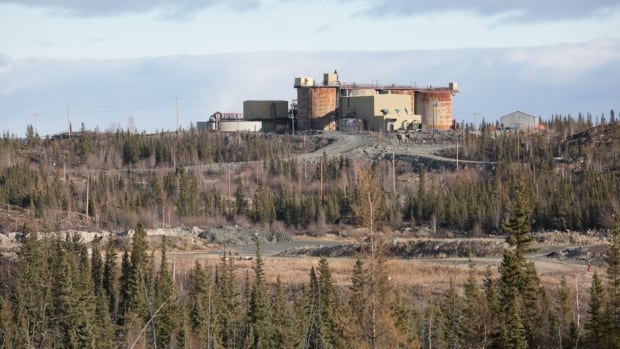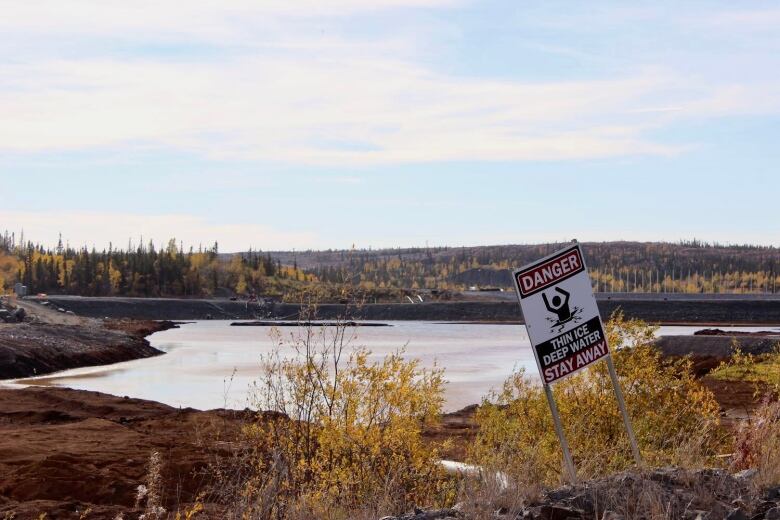
The remediation of Giant Mine in Yellowknife is expected to cost the federal government $4.38 billion — more than four times the initial estimate.
This makes the cleanup of the former gold mine the most expensive remediation project in Canada’s Northern Abandoned Mine Reclamation Program.
The previous cost estimate of $1 billion was developed in 2010, and that was a “pure construction cost estimate,” Natalie Plato, deputy director of the Giant Mine Remediation Project, said Thursday, after revealing the new estimate.
The project has changed significantly since then, she said.
The remediation of Giant Mine is an extraordinarily complicated undertaking that includes containing 237,000 tonnes of highly toxic arsenic trioxide dust deep underground.
When asked why the initial estimate was so much lower than today’s, Plato said “when we went in, we went in wanting to get this project done, and we didn’t do extensive consultation.”
Plato, who said she wasn’t involved at the project’s outset, said they got referred to an environmental assessment and heard Yellowknife-area residents wanted more consultation, more involvement and more work done on the site.
“All of those things do come at a cost,” she said.
$710M spent on project to date, says Plato
The remediation project’s budget is not publicly available.
Plato said that’s because their work is done through competitive bids and requests for proposals, and “those are protected so contractors don’t get our costs, because that can compromise the contracting process.”
The $4.38-billion estimate was drawn up by the remediation project team and approved by the Treasury Board of Canada. It includes all the project’s costs from 2005 until 2038, when remediation is set to finish.
Plato said the updated price tag takes into account contingency (i.e. potential unforeseen expenses), inflation, GST values and the $710 million that has been spent on the remediation project so far.
Plato said a lot has changed since the initial cleanup cost came out.
For one thing, the environmental assessment led to 26 legally binding measures meant to minimize the negative environmental impacts of the project and resulting public concerns.
One of those measures was the creation of the six-person Giant Mine Oversight Board.
Another was the multi-year health-effects monitoring program, which tests people in the nearby communities of Yellowknife, Ndilo and Dettah for arsenic concentrations in their urine and toenails.
Through consultations, the team heard northerners wanted northerners to benefit from the remediation project, Plato said.
To make sure local firms and people could bid on, and carry out, work at the mine site, the project team extended its schedule by nine years “to ensure that the work is right-size for northerners to participate,” said Plato. “So that also comes at a cost.”
The remediation project reports that to date, $331 million in contracts — 51 per cent of the total value of contracts it’s awarded — have gone to Indigenous contractors.
Consultations led to changes in the scope of the project as well, said Plato.
The team had originally planned to leave eight pits open, but after hearing concerns about health, safety and underground flooding in the mine, the team decided to fill the pits.
They also designed Baker Creek to accommodate a major flood. Baker Creek carries water from tailings ponds, which is treated so it meets or exceeds regulatory requirements, into Yellowknife Bay.
A benefit agreement with the Yellowknives Dene First Nation also wasn’t included in the initial remediation plan, said Plato. That agreement is valued at $2 million a year for the life of the project.
She said the benefit agreement includes money for training and positions for Yellowknives Dene First Nation members.
“Jeez, there’s so many other things, as well,” said Plato, when listing off factors that drove up costs.

Kevin O’Reilly, MLA for Frame Lake in Yellowknife, said he wasn’t surprised to see the costs balloon.
“Given the mess that the government allowed to happen there, these are costs that are required to try to protect the public from the health effects of arsenic that was generated at the mine site,” he said.
“So yeah, I think we have to spend this money and I think doing it right is very important.”
O’Reilly said long-term monitoring and maintenance of the mine site will surely wrack up costs decades and even centuries into the future. For example, the government will need to make sure the arsenic stays contained, properly store records, and communicate what happened at the mine to future generations.
“A lot more work that needs to be done, but I think we’re in a way better place than we were 10, 15 years ago,” he said, “but I’d rather spend that money on almost anything else.”
Feds to cover vast majority of costs
The federal government will cover the vast majority of the remediation costs. Plato said the Northwest Territories government is pitching in about $20 million.
She said part of the territory’s contribution included rerouting the Ingraham Trail, which used to run right through the mine.
CBC attempted to verify the territory’s contribution with the N.W.T. government, but did not get a response on Thursday.
David Livingstone, chair of the Giant Mine Oversight Board, wasn’t available for an interview but said in an emailed statement that, “the Giant Mine Oversight Board was informed only recently of the new estimates and will reserve comment until it has received and reviewed the relevant background information from the Project Team.”
Though remediation is set to wrap up in 2038, the mine will need maintenance in perpetuity.
Plato said the federal government committed to looking after the mine site for 100 years. This means the remediation project’s funding is protected, no matter who’s in government.
Responsibility for Giant Mine was foisted onto the federal government after former owner Royal Oak Mines Inc. went into receivership in 1999.
According to Plato, the federal government has learned from the disastrous outcome.
“We’ve changed how we permit mines now, and we do require security, and we do require progressive reclamation,” she said.
“We are doing better and this should never happen again.”
Neither Chief Edward Sangris of Dettah nor Chief Fred Sangris of Ndilo were available for an interview on Thursday.